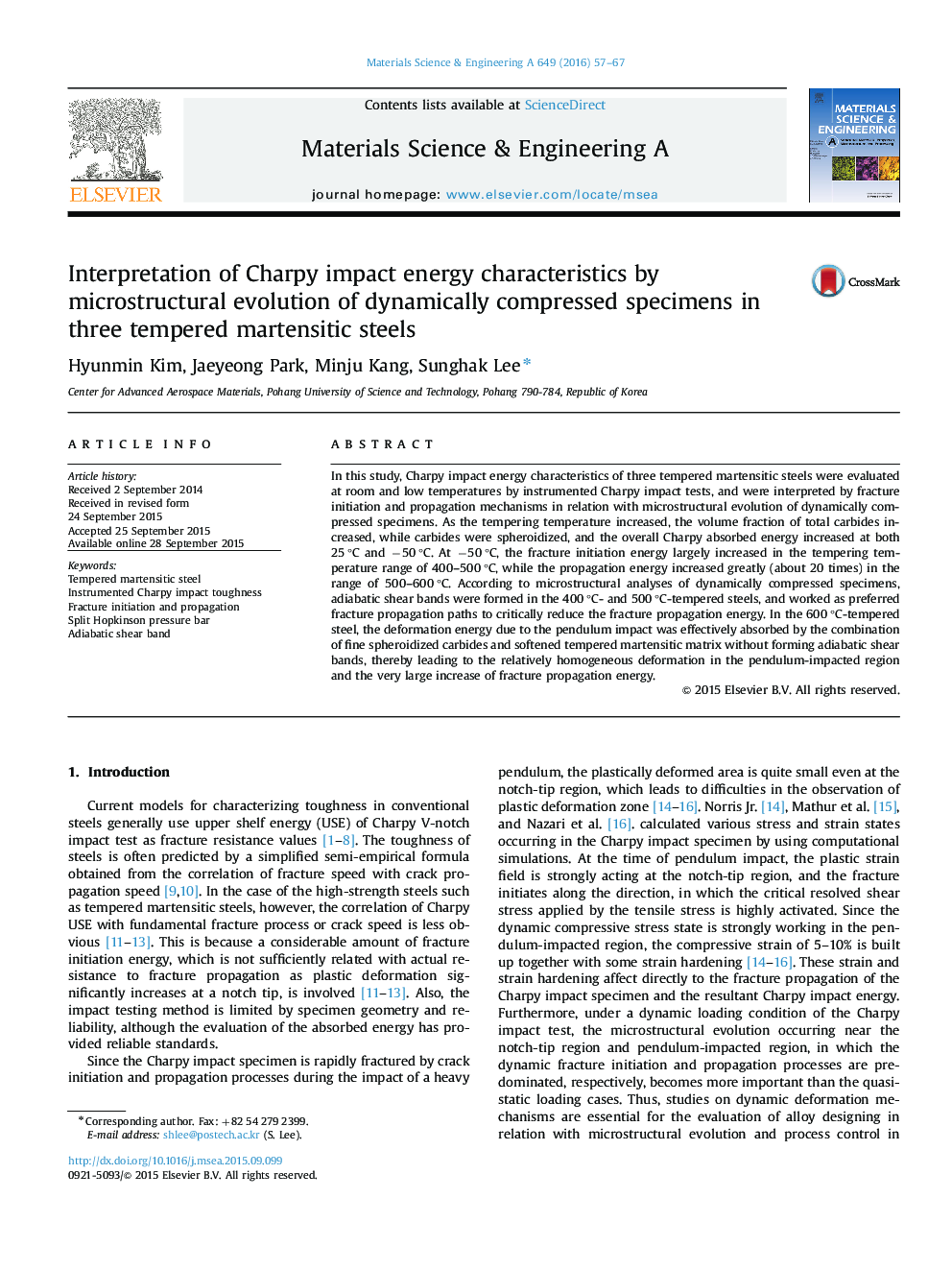| Article ID | Journal | Published Year | Pages | File Type |
|---|---|---|---|---|
| 7976415 | Materials Science and Engineering: A | 2016 | 11 Pages |
Abstract
In this study, Charpy impact energy characteristics of three tempered martensitic steels were evaluated at room and low temperatures by instrumented Charpy impact tests, and were interpreted by fracture initiation and propagation mechanisms in relation with microstructural evolution of dynamically compressed specimens. As the tempering temperature increased, the volume fraction of total carbides increased, while carbides were spheroidized, and the overall Charpy absorbed energy increased at both 25 °C and â50 °C. At â50 °C, the fracture initiation energy largely increased in the tempering temperature range of 400-500 °C, while the propagation energy increased greatly (about 20 times) in the range of 500-600 °C. According to microstructural analyses of dynamically compressed specimens, adiabatic shear bands were formed in the 400 °C- and 500 °C-tempered steels, and worked as preferred fracture propagation paths to critically reduce the fracture propagation energy. In the 600 °C-tempered steel, the deformation energy due to the pendulum impact was effectively absorbed by the combination of fine spheroidized carbides and softened tempered martensitic matrix without forming adiabatic shear bands, thereby leading to the relatively homogeneous deformation in the pendulum-impacted region and the very large increase of fracture propagation energy.
Related Topics
Physical Sciences and Engineering
Materials Science
Materials Science (General)
Authors
Hyunmin Kim, Jaeyeong Park, Minju Kang, Sunghak Lee,
